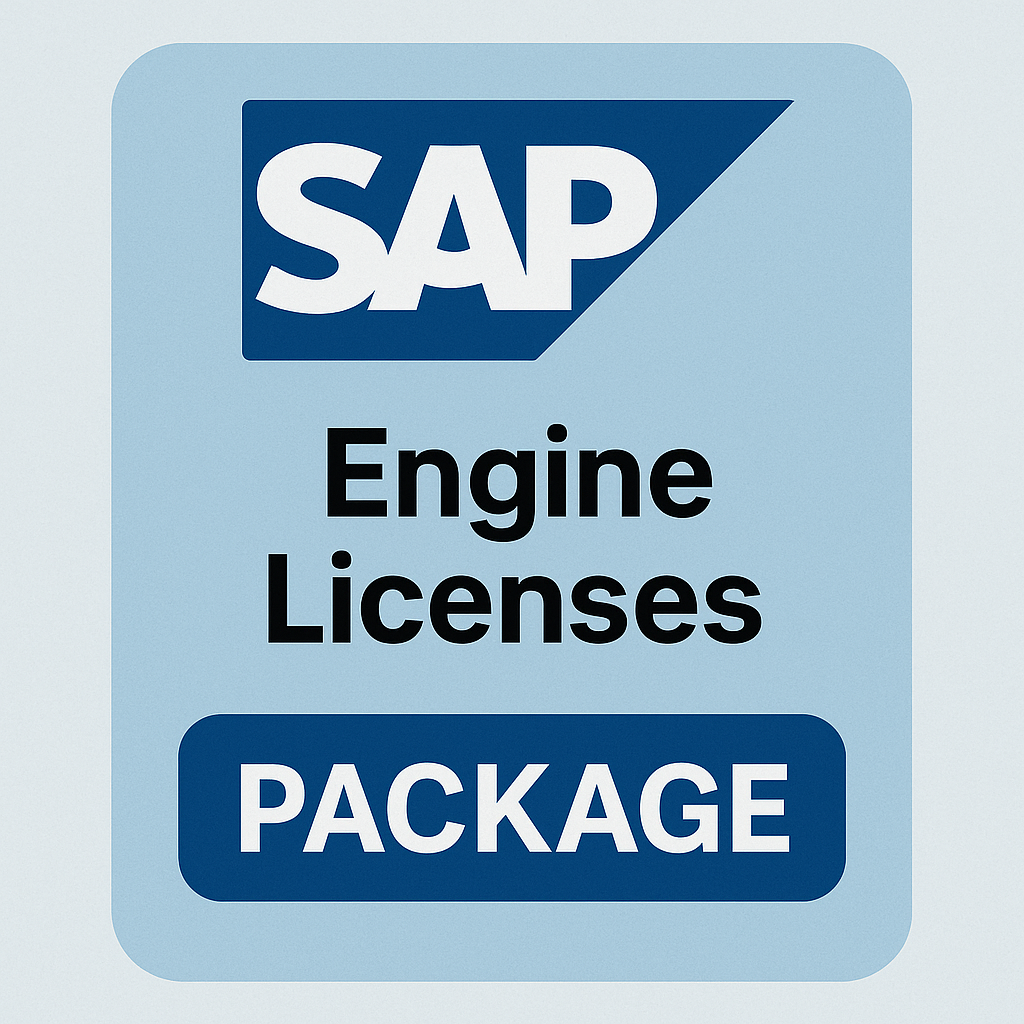
SAP Package (Engine) Licenses
Executive Summary:
SAP charges for package or engine licenses in addition to user licenses. These cover specific SAP modules or components measured by business metrics rather than per user.
Examples include licensing based on the number of employees or revenue. Effectively managing these engine licenses is key to controlling costs and staying compliant.
What Are SAP Package/Engine Licenses?
SAP package licenses (engine licenses) refer to licensing for specific SAP functional modules or technical components not covered by standard named user licenses. Unlike user licenses tied to people, engine licenses cover the usage of SAP software based on a specific unit of measure.
For example, if you use SAP’s Payroll module, you might pay for that module based on the number of employees. On-premise engine licenses are usually perpetual (one-time fee plus annual maintenance), whereas cloud subscriptions may factor engine metrics into the overall fee.
These engines cover many parts of SAP’s portfolio, from industry solutions to line-of-business add-ons and infrastructure components like the SAP HANA database – each is licensed with its own metric.
Common Metrics and Pricing
SAP uses a variety of metrics to license its packages.
Some common examples include:
- Total Number of Employees: Used for HR/HCM modules (priced per employee record).
- Annual Revenue or Spend: Used for sales or procurement modules (charging based on monetary throughput).
- Technical Capacity (Processors/Cores or Memory): This is often used for technology components like databases. Pricing might be based on server cores or memory size (e.g., GB of HANA memory).
Because metrics vary, engine pricing varies widely. Smaller engines might cost tens of thousands of dollars, whereas large enterprise engines can cost hundreds of thousands or even millions.
(For instance, a mid-sized company could easily spend several hundred thousand dollars for an SAP HCM payroll engine covering its workforce.)
It’s important to understand the specific metrics and tiered pricing in your SAP agreements, so you know the point at which increased usage would require purchasing more.
Tracking and Optimizing Engine Usage
To effectively manage engines, track their usage metrics routinely, and adjust proactively. Use SAP’s measurement tools periodically (not just during audits) to check each engine’s consumption.
If an engine is consistently under-utilized compared to your licensed amount, consider negotiating a reduction or removing it at renewal to cut costs.
Conversely, if usage is nearing or exceeding the licensed limit, address it with SAP early (through a license extension or contract adjustment) to avoid audit penalties.
Audit and Compliance Pitfalls
SAP license audits pay special attention to engine licenses. Watch out for these common pitfalls:
- Overuse/Unlicensed Usage: Using more of a product than licensed or a product with no license will be flagged in an audit. You’ll then need to purchase the shortfall (often with retroactive fees). Conduct periodic self-checks to avoid this scenario.
- Indirect Access: If external systems (like a webshop) create SAP records and you haven’t licensed Digital Access, an audit will charge for those documents. Analyze your interfaces and license any significant indirect usage to prevent surprises.
Recommendations
- Track Engine Usage: Maintain an inventory of all engine licenses and their metrics, and regularly compare actual usage to your entitlements. Set up internal alerts or checkpoints as usage approaches limits so you can respond in time.
- Use Audit Simulations: Periodically perform a self-audit focusing on engines. Run the necessary measurement reports and see if any engine usage exceeds the entitlement so that you can address it before SAP’s official audit.
- Plan for Growth in Contracts: If you expect business growth, when negotiating SAP contracts, include some buffer or flexible terms for engine metrics. Securing a higher metric band upfront or a predictable growth tier can be cheaper than an unexpected true-up later.
- Clean Up Unused Functionality: Turn off or remove SAP modules you aren’t using or licensed. This prevents accidental activation or use. If a licensed engine is no longer needed, consider retiring it to save on maintenance (consult SAP on the proper procedure).
- Monitor Indirect Use: Map out all integrations with SAP. If non-SAP systems create SAP transactions (like sales orders via an e-commerce site), quantify this indirect usage and consider the SAP Digital Access license if those volumes are significant.
Read about our SAP License Optimization Service.
